And now for something completely different….
It involves a lot of kneading, shaping and baking, but not in the way you have come to expect from me. Sit back and wait for it….
I started making ceramic figurines after a visit to an African museum. Before that, I had chiefly been making pottery bowls and cakestands, but here was a new avenue opening up in front of me. I wanted my figurines to look ethnic-primitive and the first few were fairly generic as I worked at mastering the necessary techniques. Soon, my friends started plying me with ideas for Guyanese themes and my clay shaped itself, as if of its own accord, into a collection of women who reflected the colonial and post-colonial age we grew up in. A vanished era.
Family and friends enjoyed seeing my work and together we conjured up our past in Guyana, our very diverse cultural heritage. ‘My ladies’ depicting themes from village life as it used to be.
All my figurines are lovingly created from high-quality materials and each one takes weeks to finish. The Buxton Beauties are made from a very dark clay that fires to intense brown. The layers of glaze ‘take’ in a specific way, which is characteristic of this type of clay. The clay is hand-shaped, pre-fired, glazed and re-fired at a very high temperature to make women with soul and attitude. Real Guyanese women. Sit back, relax and relive old times as you look at the photos and read the little narratives.
For more information and stories, please visit my Kiskadee Days website and the corresponding Facebook page where people congregate every weekend to chat and read the latest stories.
BUXTON BEAUTIES
SITIRA
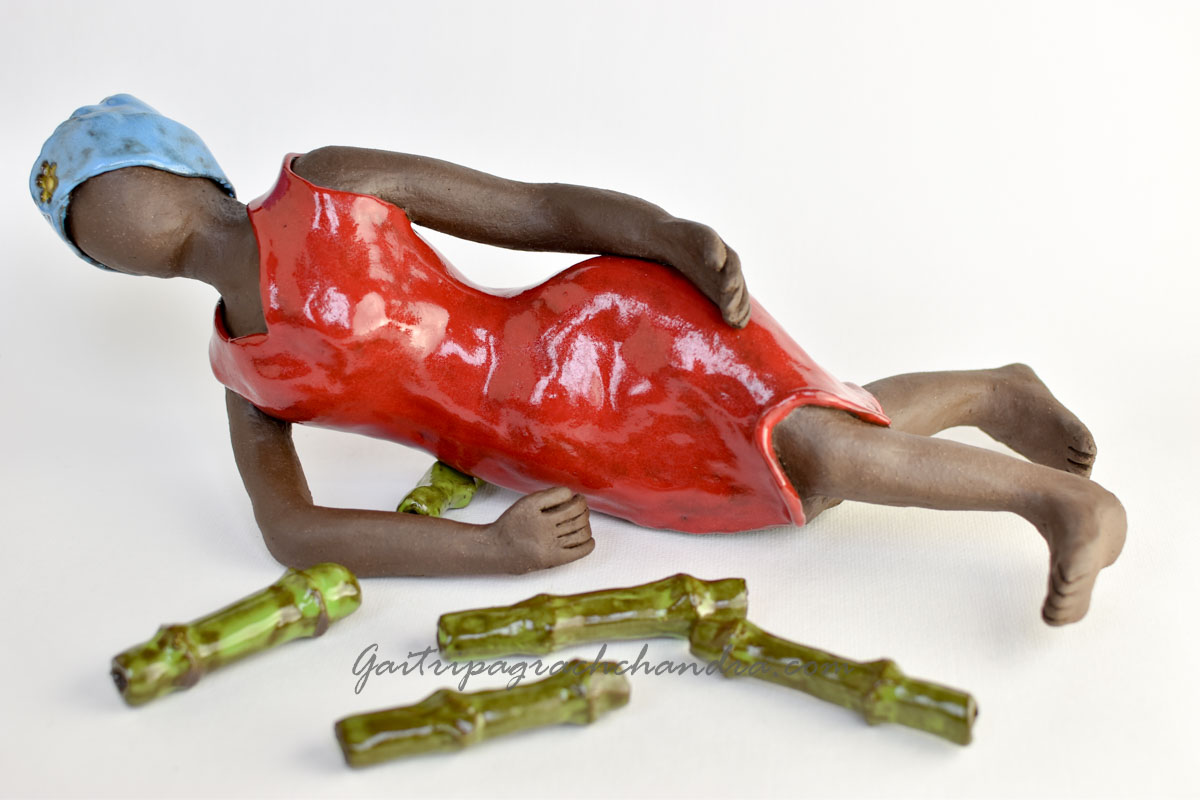
“Wan day me been a bamboo dam
An me see Sitira lay down deh.
An me ask Sitira wha she a do deh,
Sitira hice up she clo’es an wine like a Buxton bull/boar.
Oh Sitira, mo man deh, oh Sitira mo man deh.”
(Guyanese folk song)
This popular folk song has several versions. In this one, the singer is walking down a bamboo dam when he spots Sitira, a girl of flexible morals, lying there. When he asks what she is doing there, she lifts up her clothes and does a seductive hip-swaying dance. The singer tells her that there are more men around. This is open to interpretation. I think that the singer is a man, who is terrified that he will fall prey to her charms, so he pleads with her to attract some other man. Alternatively, she is being warned to act a bit more decorously, as there are more men about the place.
Sitira is now part of the permanent art collection of the Guyana Cultural Center in New York.
CLAUDETTE
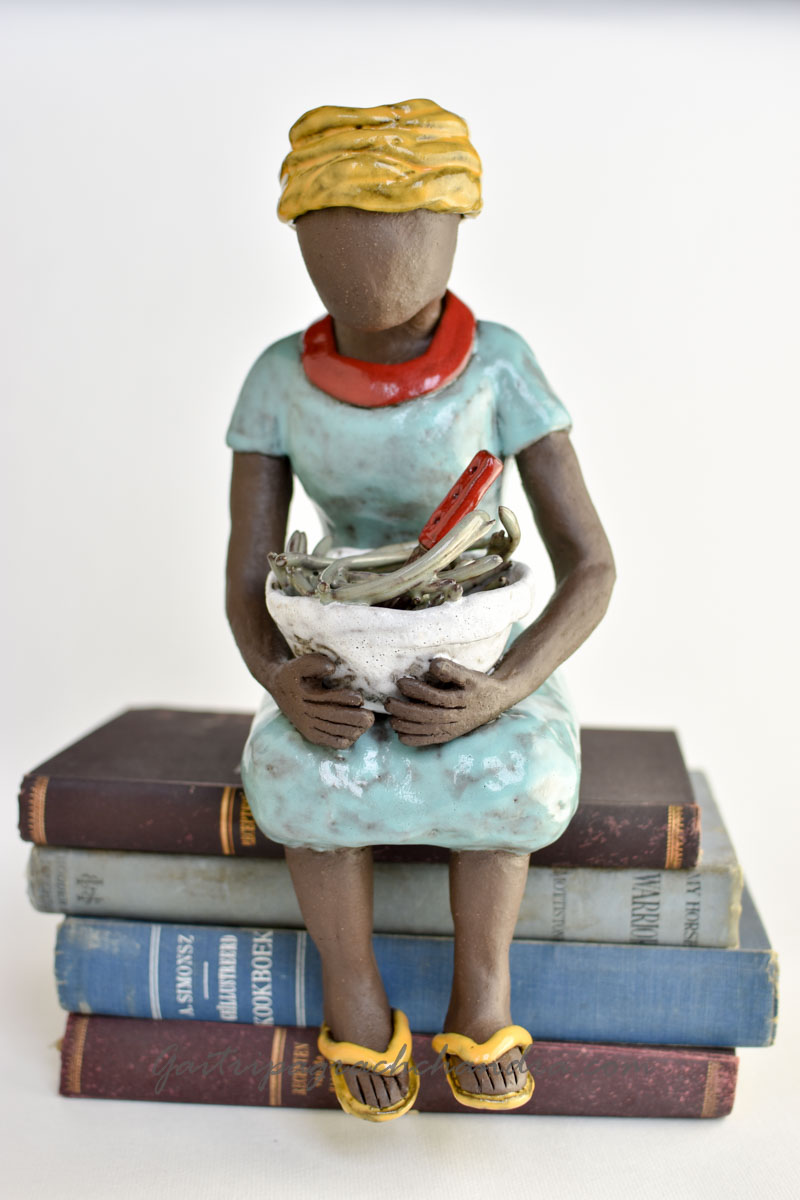
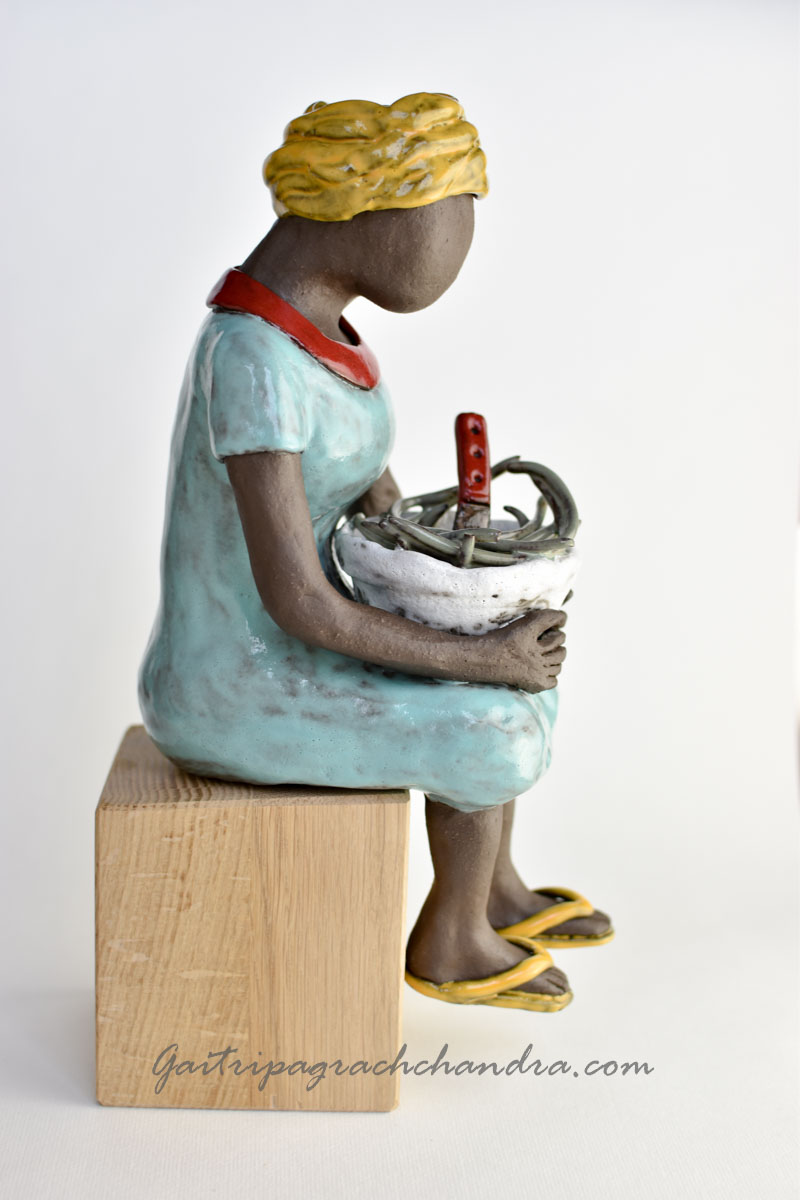
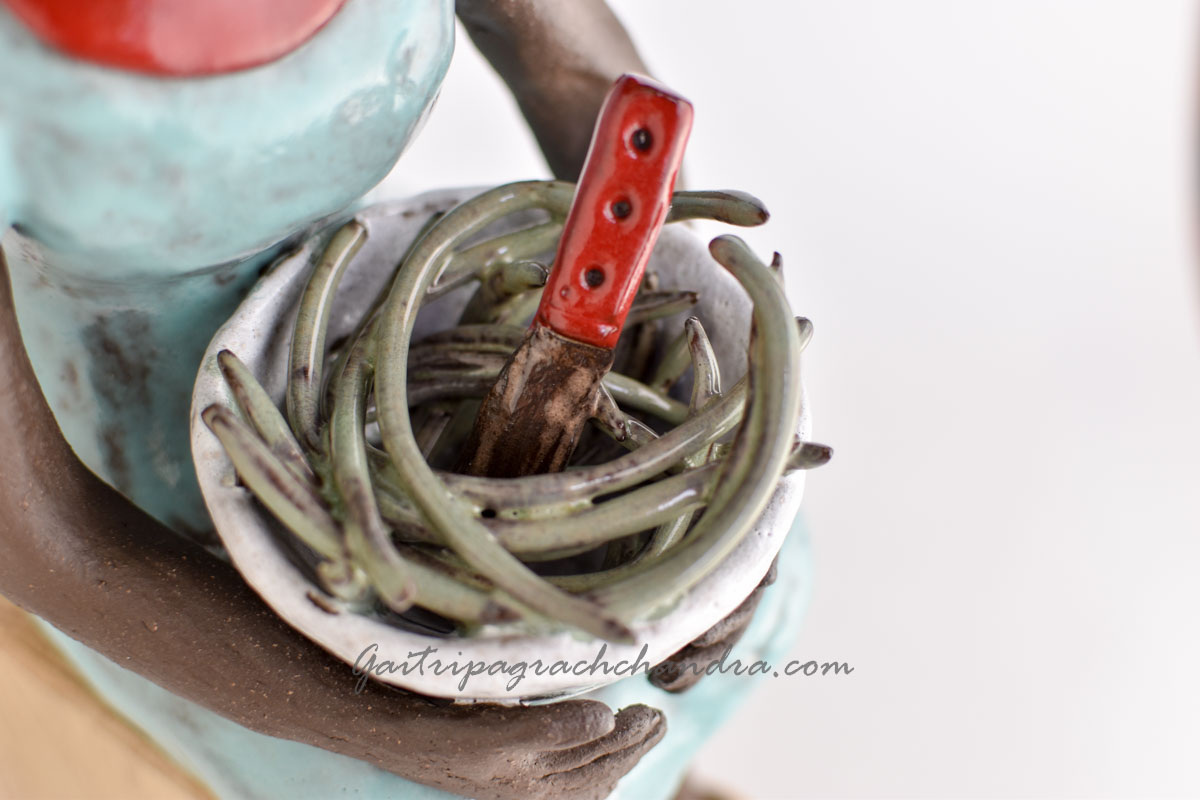
“Ah tell dat gyurl Mavis fuh come straight home from school an help me lil. Is whey she deh? Limin wid she frens again, skinnin she teet, an now miss de bus home. Ah gun gat fuh chip all dis bora meself before it spoil and swinge up in dis heat. Dem pickney dis nowadays, ah tell yuh….”
Claudette is fretting about her daughter’s failure to turn up immediately after school to assist her with chores. She supposes that Mavis has been chatting and laughing with her friends, making her miss the bus home. Now she will have to cut up the yard-long beans herself before they go off in the heat. Kids nowadays, she sighs…
In this sculpture, a tired Claudette is perched on a block of solid oak. A red-handled knife nestles between the beans, ready to cut the old-fashioned way: up against the thumb, not on a board.
MUDDER MELROSE
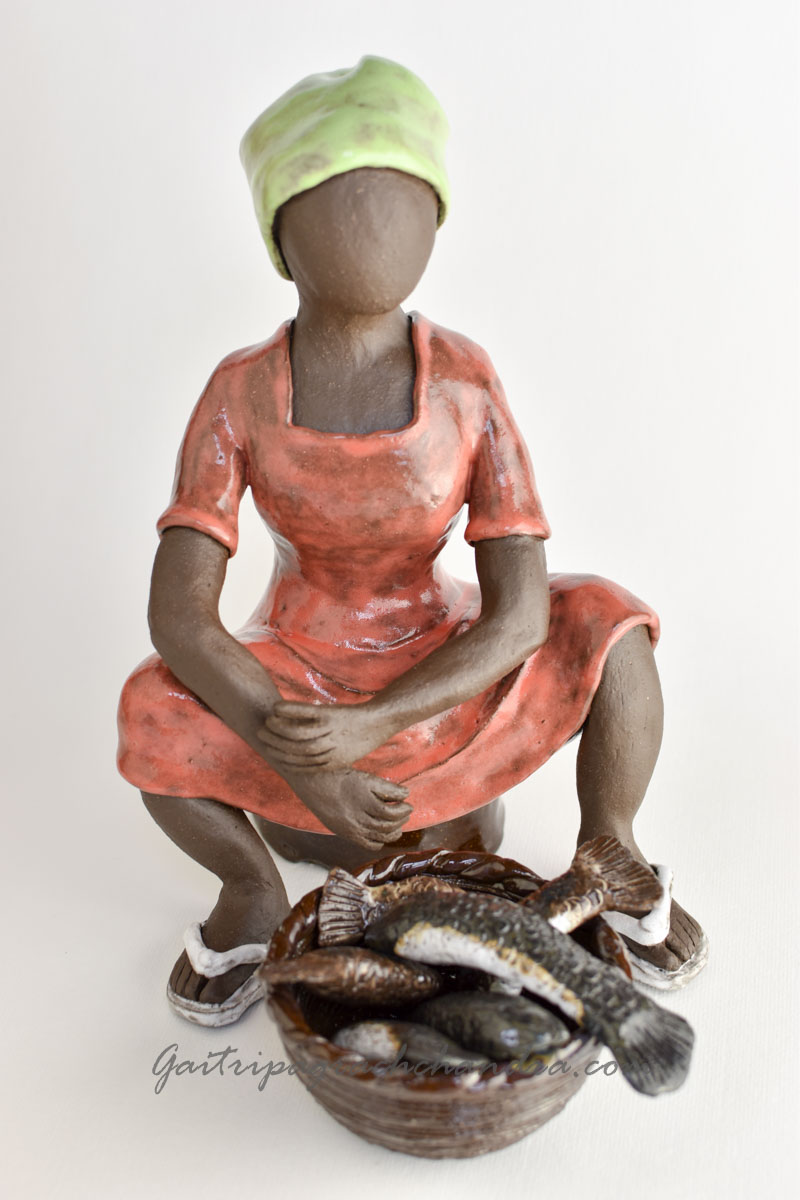
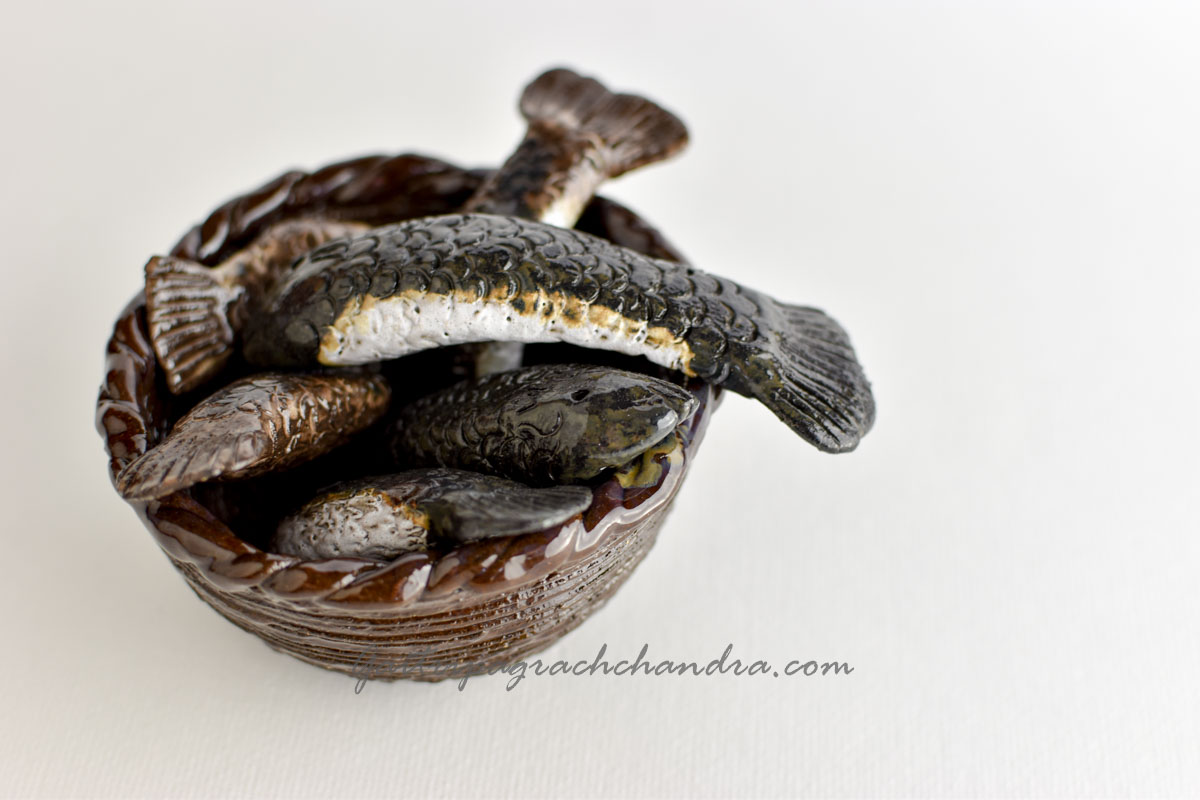
“Come get yuh cuffum and gilbaka here! Fresh-fresh livin fish dis marnin. Nice fuh curry an stew.”
Sitting wide-legged, with her basket of fish in front of her, Mudder Melrose waits for customers at the market. She knows what it is like to have to make do with very little, so she often slips an extra cut of fish into the baskets of those who struggle most. This caring attitude makes people refer to her respectfully as “Mother” Melrose.
ETHEL
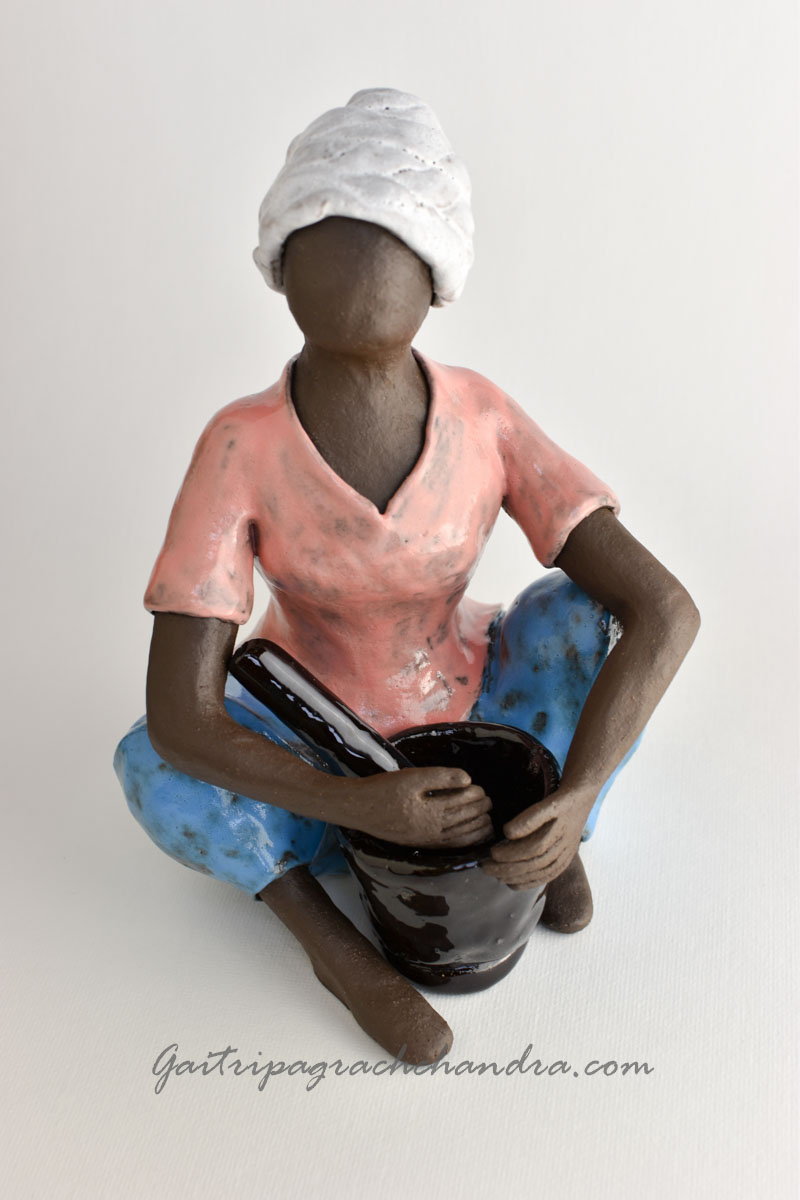

Ethel has just finished pounding her plantains and sits up sharply. In the distance she hears someone shouting….
“Neighba, neighba, len me yuh mahta, me plantain get cole arready ….. Neighba, me want fuh pung me foo-foo, me plantain get cole arready.” (Paraphrased from a Guyanese folk song.)
Ethel’s unfortunate neighbour seems to have lost or broken her mortar, strangely only discovering this after her plantains were cooked and ready to be pounded to make foo-foo.

 Visit my Facebook page
Visit my Facebook page